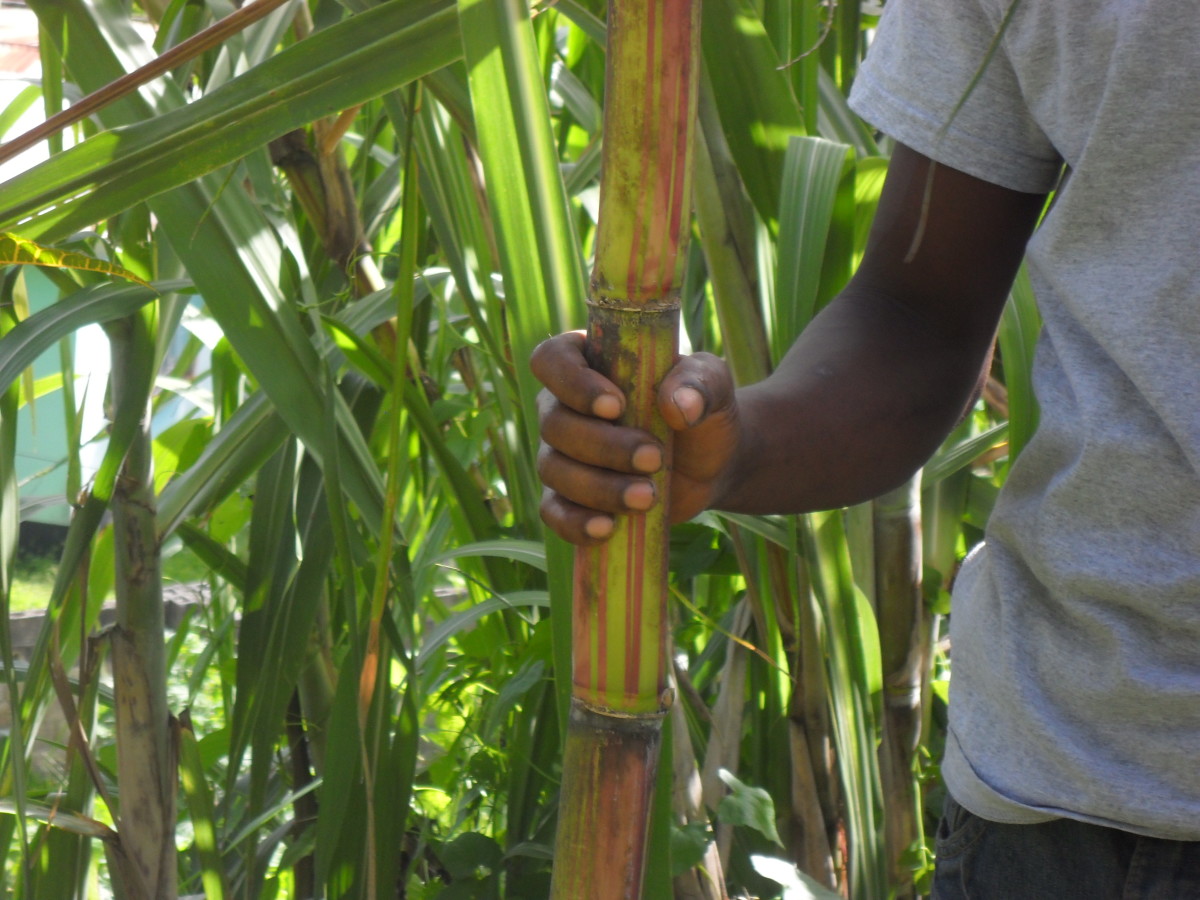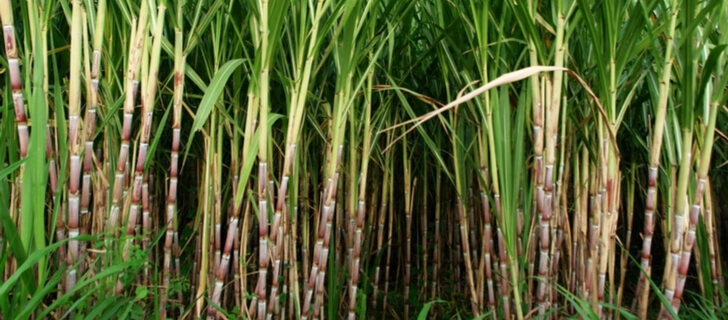What Are Sugar Canes Used For in School Science Projects?
Everything About Sugar Canes: What Are Sugar Canes Utilized For and Their Function in International Agriculture?
Sugar walking canes serve as a keystone of international farming, mostly recognized for their role in sugar manufacturing. They likewise add to the creation of byproducts like molasses and ethanol. These aspects not only support different sectors but likewise influence economic security in rural regions. The farming of sugar walking sticks faces substantial ecological difficulties. Understanding their diverse role triggers further exploration into their agricultural practices and sustainability initiatives.
The Agricultural Refine of Sugar Cane Cultivation
Sugar walking cane growing might differ by region, the fundamental agricultural process stays consistent. The initial step entails choosing high-yielding varieties appropriate for regional environments. Prep work of the dirt is vital, frequently requiring husbandry and the addition of fertilizers to improve fertility. Planting typically occurs throughout the rainy period, with farmers making use of either entire stalks or cuttings to establish brand-new crops.As the plants grow, they need attentive care, including weed control, parasite monitoring, and irrigation, relying on the environmental conditions. Farmers keep an eye on the sugar cane's development cycle, which usually extends 10 to 24 months, before harvesting. Gathering is labor-intensive, often conducted manually or with specialized machinery, making sure marginal damage to the stalks. Complying with harvest, the cane is moved to processing facilities. This meticulous farming procedure not only sustains neighborhood economic situations yet likewise plays a considerable duty in international agricultural techniques, contributing to food and power materials.
Sugar Production: From Cane to Crystal
The trip of sugar production starts the minute freshly gathered sugar walking cane reaches processing facilities. The very first step includes cleaning and chopping the walking cane to prepare it for removal. Utilizing high-pressure rollers, the juice is drawn out from the smashed cane, causing a pleasant liquid called sugarcane juice. This juice undergoes clarification, where contaminations are eliminated via the enhancement of lime and heat.Next, the made clear juice is concentrated by boiling it to produce a thick syrup. This syrup is then taken shape by cooling down, allowing sugar crystals to develop. The taken shape sugar is divided from the staying syrup, recognized as molasses, through centrifugation.Finally, the sugar crystals are washed and dried out, leading to the familiar granulated sugar (What Are Sugar Canes Used For). This procedure changes raw sugar cane right into an item that is essential to different culinary and industrial applications, highlighting the relevance of sugar in international farming
Biofuels and Sugar Canes: A Lasting Future
As the globe significantly looks for lasting energy remedies, sugar walking canes have emerged as an appealing resource for biofuels. The biomass acquired from sugar canes can be converted right into ethanol, a renewable fuel alternative that substantially reduces greenhouse gas emissions contrasted to nonrenewable fuel sources. This procedure not just supplies a cleaner power resource yet likewise promotes energy self-reliance for lots of countries.In enhancement, sugar walking cane growing sustains rural economic situations by developing work in both farming and biofuel manufacturing markets. The use of sugar walking sticks for biofuel manufacturing also encourages agricultural diversity, which can enhance dirt wellness and decrease reliance on single plants. Additionally, the byproducts of sugar cane processing can be used for electrical power generation, in addition adding to a lasting energy cycle. As countries undertaking to satisfy renewable resource targets, sugar walking sticks are poised to play a necessary function in forming a much more sustainable future in the biofuel landscape.

The Function of Sugar Canes in Beverage Production
Sugar walking sticks play a substantial function in drink production, serving as a main active ingredient in rum and adding to the sweetness of lots of soft beverages. In addition, their natural juices are utilized in different drinks, enhancing taste and charm. This adaptability highlights the relevance of sugar walking canes in the global beverage industry.
Sugar Walking Stick in Rum
Rum manufacturing is elaborately connected to the farming of sugar cane, a crucial plant that gives the essential fermentable sugars required for fermentation. This procedure begins with the removal of juice from collected sugar canes, which is after that either fermented directly or processed into molasses. Yeast is added to transform the sugars right into alcohol, causing a varied variety of rum styles, from light to dark ranges. The geographical area where the sugar walking cane is grown considerably influences the taste profile of the rum, with variables such as soil type and environment having fun essential functions. Nations like Barbados, Jamaica, and Cuba are renowned for their rum production, showing the social and historic relevance of sugar walking stick within the global visit this site beverage market.
Soft Drinks Sugar Resource

Natural Juice Manufacturing Makes Use Of
In enhancement to its considerable role in soft beverage production, sugar walking stick is likewise critical in the natural juice industry. The juice drawn out from sugar walking cane, called cane juice, is commemorated for its all-natural sweet taste and distinct taste account. This juice is typically consumed fresh in different regions, especially in tropical nations, where it is delighted in as a rejuvenating beverage. Furthermore, walking cane juice functions as a base component in a variety of all-natural fruit juices and shakes, boosting both preference and nutritional value. Its natural homes make it an attractive option to artificial sweeteners, appealing to health-conscious consumers. Overall, sugar cane's convenience in juice manufacturing emphasizes its significance in modern drink offerings worldwide.
Developments in Sugar Walking Stick Byproducts
Innovations in sugar walking stick byproducts are leading the way for sustainable remedies in numerous sectors. Biofuels stemmed from sugar walking cane supply a different energy resource, while improvements in sustainable packaging are minimizing reliance on standard materials. These growths highlight the convenience and potential of sugar walking stick past its main use in beverage manufacturing.
Biofuels From Sugar Walking Cane
Exactly how can the results of sugar walking stick add to sustainable energy solutions? The conversion of sugar walking stick into biofuels provides a promising method for sustainable energy. By utilizing the fibrous residue, understood as bagasse, producers can create bioethanol with fermentation processes. This bioethanol can act as a lasting choice to fossil gas, reducing greenhouse gas exhausts and dependence on non-renewable sources. In addition, molasses, another by-product, can be fermented to produce biofuels, making the most of source effectiveness. The power created from sugar cane not only supplies a cleaner fuel source but likewise boosts the total financial feasibility of sugar manufacturing. By integrating biofuel production into their procedures, sugar cane sectors can play an essential role in advancing lasting power services internationally.
Sustainable Packaging Solutions
Sustainable product packaging services are increasingly being established from sugar walking cane by-products, showcasing the adaptability of this farming staple. Advancements such as eco-friendly plastics originated from bagasse, the coarse residue navigate to this website left after juice extraction, are obtaining grip. These materials offer an environmentally friendly alternative to typical plastics, minimizing dependence on fossil gas and lowering carbon footprints. Furthermore, sugar cane-based packaging is compostable, damaging down naturally without harming the setting. Business are now checking out these options to line up with customer demand for sustainability. As understanding of plastic air pollution expands, the fostering of sugar cane-derived product packaging is expected to increase, placing sugar canes as an essential gamer in the change to greener packaging options in numerous sectors.
Economic Influence of Sugar Cane Farming

Although sugar walking stick farming has deep origins in numerous economic situations, its economic impact prolongs far past agricultural manufacturing. This crop works as a substantial income for countless farmers worldwide, especially in developing countries where farming is a primary income. Sugar cane adds to neighborhood economic climates through task development in harvesting, cultivation, and processing. The market also promotes growth in related fields such as transport, devices production, and food processing.Furthermore, sugar cane is a principal in global profession, affecting global markets and prices. Countries that create sugar cane usually count on exports to improve their financial security. The spin-offs of sugar cane, such as ethanol and molasses, diversify earnings streams for farmers and include worth to the farming industry. In general, the economic ramifications of sugar cane farming are extensive, affecting not only farmers however additionally nationwide economic situations and whole communities.
Environmental Factors To Consider in Sugar Cane Growing
While sugar cane farming plays a vital duty in many economic situations, it likewise elevates considerable environmental worries that can not be overlooked. The extensive use fertilizers and pesticides in sugar walking stick cultivation usually brings about dirt deterioration and water air pollution. Drainage from these chemicals can infect neighboring water bodies, hurting aquatic ecological communities. Furthermore, the monoculture methods widespread in sugar walking stick farming lower biodiversity, making communities much more vulnerable to parasites and diseases.Deforestation is an additional critical issue, as land is commonly gotten rid of to wikipedia reference give way for sugar ranches, resulting in habitat loss for wildlife and enhanced carbon exhausts. Moreover, the high water intake required for sugar walking stick watering can strain local water sources, specifically in deserts. As worldwide need for sugar remains to increase, resolving these ecological challenges comes to be imperative to guarantee sustainable methods in sugar walking stick farming.
Regularly Asked Concerns
What Are the Nutritional Conveniences of Sugar Cane?
The nutritional benefits of sugar walking cane mostly include its high carbohydrate content, giving power. Additionally, it consists of vitamins, minerals, and anti-oxidants that might support general health and wellness, though moderation is important as a result of its sugar content.
How Does Sugar Cane Affect Citizen Ecosystems?
Sugar walking stick cultivation can significantly affect regional ecological communities by altering land usage, impacting biodiversity, and requiring significant water resources. In addition, it may bring about dirt deterioration and chemical overflow, interfering with bordering habitats and wildlife populations.
What Is the Background of Sugar Walking Stick Farming?

Exist Alternatives to Sugar Walking Cane for Sugar Manufacturing?
Alternatives to sugar walking stick for sugar production include sugar beetroots, corn, and numerous exotic plants like sorghum and agave (What Are Sugar Canes Used For). These plants provide varied sources of sweet taste, each with unique cultivation requirements and environmental effects
Just How Do Climate Patterns Influence Sugar Cane Yields?
Climate patterns significantly affect sugar walking stick returns through temperature level changes, rains quantities, and seasonal cycles. Drought or extreme rainfall can hinder growth, while excellent conditions improve photosynthesis, eventually impacting the amount and high quality of the harvest. The journey of sugar production starts the minute freshly gathered sugar cane gets here at processing centers. The crystallized sugar is separated from the remaining syrup, recognized as molasses, through centrifugation.Finally, the sugar crystals are washed and dried, resulting in the familiar granulated sugar. Rum manufacturing is intricately linked to the farming of sugar walking cane, a crucial plant that offers the required fermentable sugars needed for fermentation. In addition, the monoculture techniques prevalent in sugar cane farming lower biodiversity, making environments extra prone to bugs and diseases.Deforestation is another crucial issue, as land is commonly gotten rid of to make means for sugar ranches, leading to habitat loss for wild animals and enhanced carbon emissions. Alternatives to sugar walking stick for sugar production include sugar beets, corn, and numerous exotic plants like sorghum and agave.